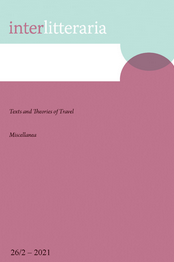Who’s Afraid of the Werewolf? An Imagological View of Kitzberg’s Play
Who’s Afraid of the Werewolf? An Imagological View of Kitzberg’s Play
Author(s): Anneli NinreSubject(s): Theatre, Dance, Performing Arts, Estonian Literature, Pre-WW I & WW I (1900 -1919), Theory of Literature
Published by: Tartu Ülikooli Kirjastus
Keywords: the Other; fear, werewolf; August Kitzberg; Estonian drama;
Summary/Abstract: The archetypal fear of the other and the idea that it is safer to hold on to the familiar are the central topics discussed in one of the best plays in Estonian literature Libahunt (The Werewolf, 1912) by August Kitzberg (1855–1927). Although the play was written at the beginning of the 20th century, it is still open to interpretation and has not lost its relevance. It is a play about conflict between values: the Tammaru family is conservative and afraid of strangers, of foreign blood, while one of their foster children Tiina is a free spirit whose appearance and nature is different from the family. She is not one of the villagers, she is an outsider and the family and the villagers are afraid of her. This stranger is seen as mysterious and dangerous – she is said to be a werewolf – and the xenophobic village casts her out. Using imagology as a theoretical basis, the article concentrates on the aspect of the foreigner and on fear of the other.
Journal: Interlitteraria
- Issue Year: XXVI/2021
- Issue No: 2
- Page Range: 464-473
- Page Count: 10
- Language: English

